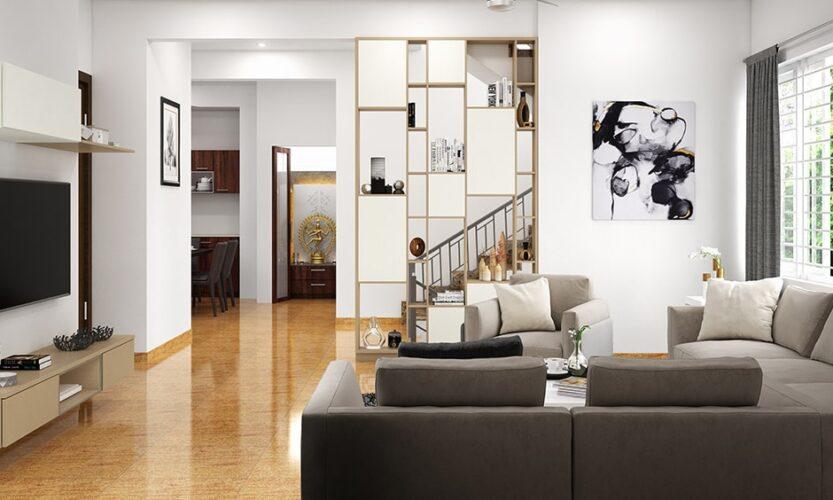Business
Spatial Planning: Mastering The Layout Of Your Living Space

When it comes to creating a harmonious and aesthetically pleasing living space, effective spatial planning is the key. This essential aspect of interior design goes beyond just choosing the right colors and furniture; it’s about optimizing the layout of your living area to make the most of the available space. This article will delve into the importance of effective spatial planning in interior design and touch upon how an interior design course can teach students these critical skills. (Also Know About Transform Your Living Space Into A Haven Of Comfort And Style)
Table of Contents
The Significance Of Spatial Planning
Imagine walking into a room that feels cluttered and chaotic, where furniture is haphazardly arranged, and there’s a general sense of disarray. Now, picture entering a space that exudes a sense of calm and order, with furniture thoughtfully placed to maximize comfort and functionality. The difference between these two scenarios lies in spatial planning.
Optimizing Space Utilization
Effective spatial planning involves analyzing the available space and making the best use of it. This includes determining the ideal placement of furniture, appliances, and other elements to ensure that the room is both functional and aesthetically pleasing. Properly planned spaces can often feel larger and more inviting, even if they are limited in size.
Enhancing Flow And Accessibility
Another crucial aspect of spatial planning is ensuring smooth flow and accessibility within a room. This means considering factors like the placement of doors, windows, and walkways. When done right, spatial planning allows for easy navigation and prevents obstructions that can disrupt the overall harmony of the space.
Balancing Aesthetics And Functionality
Good spatial planning strikes a balance between aesthetics and functionality. It involves carefully selecting furniture and decor that not only look appealing but also serve a purpose. This synergy between form and function is what gives a room its character and charm.
Efficient Storage Solutions
Another crucial aspect of spatial planning is incorporating efficient storage solutions. This helps in decluttering and organizing your living space effectively. From built-in cabinets to hidden storage compartments, spatial planning ensures that everything has its place, contributing to a cleaner and more visually appealing environment.
Long-Term Versatility
A well-planned space is versatile and adaptable. It can accommodate changes in your lifestyle or family dynamics over time. Whether you need to create a nursery, a home office, or a guest room, a thoughtfully planned layout can easily evolve with your needs.
Maximizing Natural Light
Spatial planning also takes into account the strategic placement of windows and openings to maximize natural light. Well-planned spaces can harness sunlight, reducing the need for artificial lighting during the day. This not only saves energy but also creates a more inviting and vibrant atmosphere. (You will also love to read The Rewards And Challenges Of Being A Senior Living Caregiver)
Personalization And Comfort
Effective spatial planning allows for the personalization of your living space. It enables you to tailor the layout to your specific needs and preferences. For example, if you love reading, spatial planning can ensure that your reading nook is well-lit, cozy, and conveniently located within your home.
Mastering The Art Of Spatial Planning
If you’re interested in mastering the art of spatial planning and other essential interior design skills, enrolling in interior design courses can be a great starting point. These courses offer a structured curriculum that covers various aspects of interior design, including spatial planning. Here’s how they can help you hone your skills:
Comprehensive Curriculum
An interior design course will typically offer a well-rounded curriculum that includes modules on spatial planning, color theory, furniture selection, and more. These courses are designed to provide students with a solid foundation in the principles and techniques of interior design.
Practical Experience
Many interior design programs incorporate hands-on projects and real-world scenarios to help students apply their knowledge. These practical experiences allow aspiring designers to practice spatial planning in different contexts, gaining valuable insights into what works best in various living spaces.
Expert Guidance
Enrolling in these courses means having access to experienced instructors who can provide guidance and feedback. These professionals can help students understand the nuances of spatial planning and offer valuable insights that come from years of industry experience.
Networking Opportunities
These courses often provide students with opportunities to connect with peers and professionals in the field. Building a network of like-minded individuals and industry contacts can be instrumental in advancing your career as an interior designer.
Staying Updated
The world of interior design is constantly evolving, with new trends and technologies emerging regularly. These courses ensure that students stay up-to-date with the latest developments in the industry, including innovative spatial planning techniques and tools.
Conclusion
Effective spatial planning is the foundation of any well-designed living space. It’s the art of making your home not only beautiful but also functional and comfortable. Whether you’re looking to transform your own living space or pursue a career in interior design, mastering the principles of spatial planning is essential. (Interesting Topics For You What To Know About Senior Living)

-

 Business3 years ago
Business3 years agoHow to Do Long-Distance Moves with Children
-

 Travel2 years ago
Travel2 years agoQuick Guide: Moving To Santa Rosa?
-

 Real Estate3 years ago
Real Estate3 years agoWhy Dubai Festival City is a Great Neighbourhood for Young Learners
-

 Business3 years ago
Business3 years agoIs Guest Posting a Good Inbound Marketing Strategy?
-

 Business1 year ago
Business1 year agoThe Ultimate Guide To Thriving In Your Printing Franchise
-

 Business1 year ago
Business1 year agoExploring The Benefits And Challenges Of Restaurant Franchising
-

 Tech3 years ago
Tech3 years agoCyber Table That Will Change Your Life
-

 Lifestyle1 year ago
Lifestyle1 year agoDallas’ Hidden Gems: 6 Must-Try Restaurants Off The Beaten Path!









Recent Comments